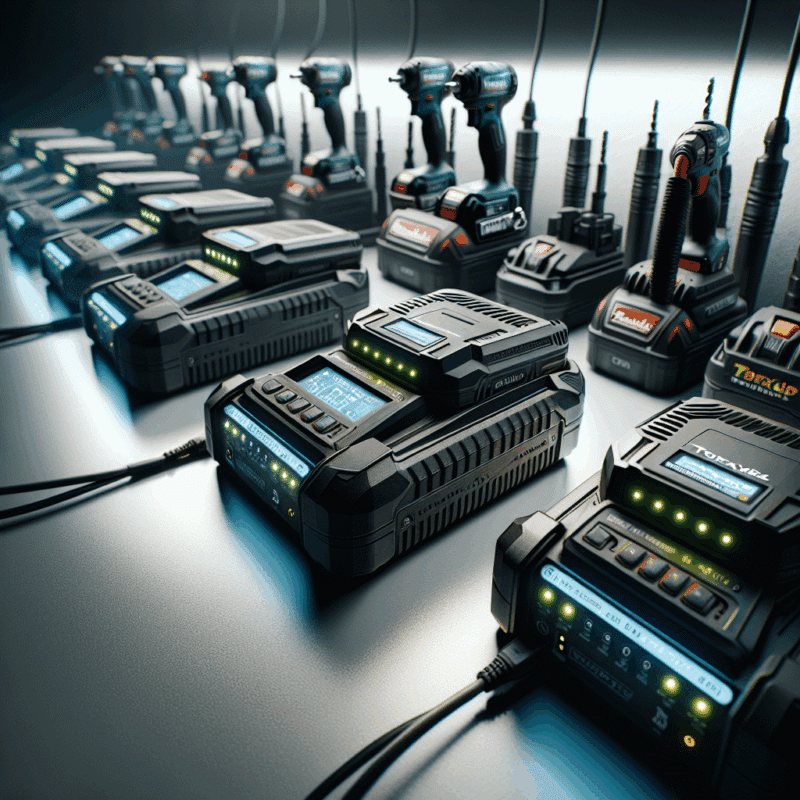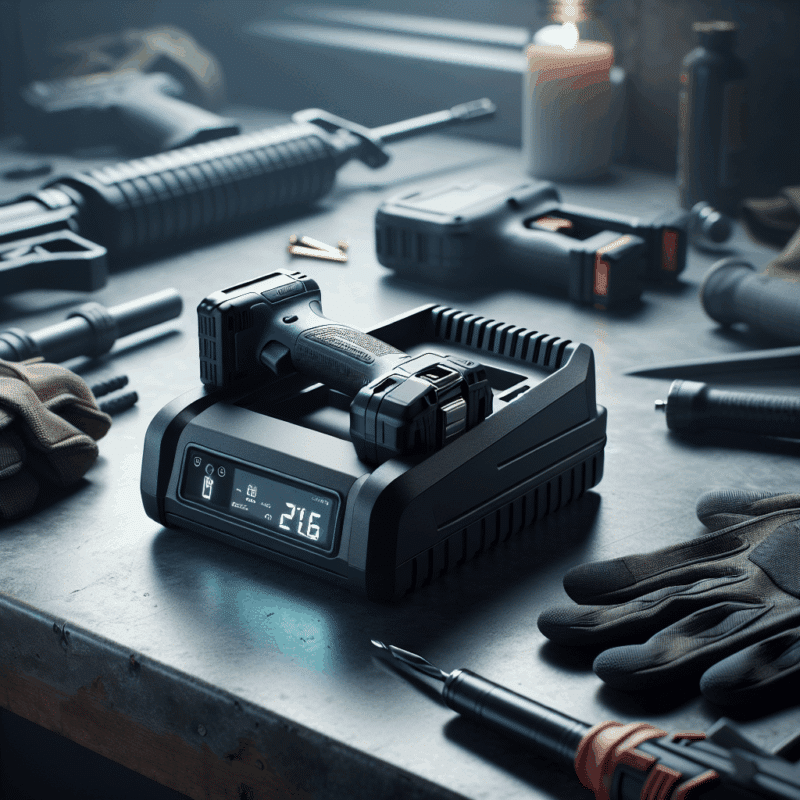Smart Chargers and Battery Health: Myths Debunked for Makita Users
In This Article
- Smart charger benefits include longer battery life and increased tool safety.
- Fast charging does not inherently damage lithium-ion batteries.
- Makita smart chargers use data-driven safeguards for optimal performance.
- Heat management and error indicators prevent premature battery failure.
- User habits, along with intelligent chargers, are key to battery longevity.
Why Battery Health Matters
The cost of battery failure
Battery health is not merely a matter of performance—it’s a financial and operational concern. The importance of keeping batteries in optimal condition cannot be stressed enough because battery replacements are not only expensive, but they also lead to worksite downtime. Each failed battery diminishes your productivity, and over time, this disruption can accumulate significant cost implications.
Unlike consumable materials, lithium-ion batteries and similar high-density power units are designed with longevity in mind. However, improper charging, excessive heat, and poor storage practices can reduce that lifespan by up to 50%. This degradation is even more prominent among heavy power tool users relying on rapid recharge cycles. Now, with the advent of smart chargers, this narrative is shifting. There’s a growing consensus that smart charger benefits extend far beyond convenience—they actively preserve battery longevity and safe functionality.

Myths Around Fast Charging
Fast doesn’t mean harmful
A common misconception suggests that fast charging inevitably damages batteries. While it’s true that high-temperature exposure and overcharging can harm lithium-ion cells, modern smart chargers are engineered to prevent these risks entirely. In fact, these systems integrate real-time thermal monitoring, providing safeguards that prevent overheating and overvoltage conditions automatically. Thus, elite brands like Makita employ quick charging without sacrificing battery life.
The myth stems from outdated knowledge concerning older batteries such as nickel-cadmium, which were susceptible to memory effect and needed careful charging protocols. Modern lithium-ion batteries, by contrast, are paired with integrated circuit sensors and are fully compatible with intelligent chargers that adjust input current based on real-time battery conditions.
“Speed is not the enemy of battery health—it’s poor charging practices that do the damage.”
Smart Chargers Explained
Technology behind the scenes
Smart chargers operate using microprocessors and sensor networks that manage power delivery to the battery. These devices continuously assess variables like voltage input, ambient temperature, charge cycles, and battery type. This intelligence enables the charger to adapt its behaviour in real-time, delivering energy efficiently while preventing conditions known to degrade battery cells.
Key among the features is trickle charging, taper charging, and balance charging—each of which optimises specific facets of energy transfer. Trickle charging avoids unnecessary stress on a fully charged battery, taper charging reduces current at the later stages of the cycle, and balance charging ensures uniform energy across all cells in multi-cell packs. These capabilities make smart chargers an invaluable asset to anyone looking to preserve their power tool investment.
How Smart Chargers Benefit Makita Batteries
From temperature control to voltage management
The smart charger benefits are particularly evident when reviewing battery care ecosystems developed by top-tier brands—Makita being a prime example. Their smart charging systems incorporate advanced cooling fans, data chip compatibility, and feedback loops that manage battery diagnostics. These chargers don’t simply send power to the battery; they evaluate it first and tailor the charge accordingly.
A critical feature includes temperature control, which prevents charging when the battery is outside the optimal operating range. Makita smart chargers also include LED indicators to convey real-time charge status and fault warnings, reducing user error. The result is a battery that not only charges faster but also maintains a higher number of effective life cycles. This is why tradespeople recognise the smart charger benefits as instrumental to daily productivity.
Common Myths Debunked
Separating fact from fiction
There are multiple misconceptions surrounding smart chargers, most derived from older charging practices or confusion between fast charging and high-voltage charging. One frequent myth asserts that smart chargers “overcharge” batteries to expedite the process. However, any legitimate smart charger will include cut-off protocols that shut power delivery once optimal voltage is met.
Another fallacy is that using third-party smart chargers voids warranty or harms the battery. While it’s always advisable to use OEM-certified equipment, many third-party smart chargers meet or exceed safety standards. What truly matters is compatibility and the availability of safety features like short-circuit protection, temperature sensing, and reverse polarity detection.
What to Look For in a Smart Charger
Key safety and performance features
Choosing the right smart charger involves more than just selecting the branded option. Safety and intelligent control systems are paramount. Look for features such as onboard diagnostics, compatibility with multiple battery types, and temperature-responsive charging.
Other important inclusions are LED indicators, automatic charge termination, and fast-heat dissipation architecture. Additionally, smart chargers with built-in firmware updates allow functionality to evolve alongside battery innovations. Learn more about Power tool battery care and charging technology offers an in-depth guide on choosing the safest charger that aligns with your operational needs.
Real-World Insights from Makita Users
Voices from the trades
Tradespeople and DIY enthusiasts alike have noticed the smart charger benefits in their workflows. According to multiple testimonials, users observed significant reductions in charge times without sacrificing battery integrity. Reports suggest that Makita batteries maintained full efficiency even after over 300 cycles when paired exclusively with smart chargers.
One electrician noted his batteries “ran cooler, lasted longer, and performed consistently for years” thanks to the charger’s built-in cooling fan and diagnostic routines. These types of field experiences lend strong credibility to technical claims and underscore the utility of investing in a modern smart charging system. Does fast charging actually harm batteries? includes more customer reviews and comparative analysis.
Tips for Extending Battery Life
Simple practices for lasting performance
While smart chargers significantly improve longevity, user practices are equally vital. Always store batteries in temperate environments—extreme heat or cold can severely damage lithium-ion cells over time. Similarly, avoid deep discharges which strain the cells and hasten chemical breakdown.
Allowing a battery to cool before recharging is another best practice. After heavy use, batteries are often hot and charging them immediately can elevate internal temperatures even more, leading to reduced lifespan. Finally, regular use actually preserves battery chemistry better than prolonged storage. Pair these habits with a smart charger, and you multiply the smart charger benefits considerably.
Chargers That Protect Your Tools
Trusted brands and products
Makita, Bosch, and DeWalt all offer high-grade smart chargers designed to interface perfectly with their respective batteries. Makita’s DC18RC model, for instance, incorporates optimum charging systems that evaluate battery condition and adjust voltage on-the-fly. Similarly, DeWalt’s DCB115 model handles both 12V and 20V rechargeable batteries using a feedback pulse charging system.
For users employing multi-brand tool sets, universal smart chargers exist that adjust between formats while maintaining required safety protocols. Ensure any charger you select complies with CE or UL certifications and offers robust customer support. Read a related article dives deeper into trusted charging units suitable for professionals.
Expert Opinions on Fast Charging Safety
Scientific and technical consensus
Technical literature overwhelmingly supports the safety of intelligent fast charging when managed properly. A study from the Journal of Power Sources verifies that smart charging algorithms reduce cell degradation by 35% compared to legacy charging methods. These results have been replicated across various usage scenarios and brands, solidifying the scientific consensus in favour of smart technologies.
Electrical engineers frequently cite the use of charging profiles that adapt to real-time feedback as the breakthrough that transformed modern battery technology. Moreover, various university-led engineering projects now include smart chargers in their off-grid and green energy kits, evidencing how widespread trust in these tools has become. Effective digital strategies for technical products provides additional insights from battery technology specialists.
Conclusion: Smart Charging is Smart Practice
Across the board, smart charger benefits are numerous and substantive. From enhancing battery longevity to delivering safer, faster charge cycles, smart chargers embody the evolution of energy management for tools and devices. For Makita users especially, these chargers are not just accessories—they are performance enhancers.
By debunking longstanding myths and embracing modern charging intelligence, professionals ensure they get the most out of their hardware investments. In doing so, they also align with sustainable best practices and safety benchmarks. Whether you’re running a large job site or using tools for weekend projects, adopting a smart charger is undeniably the most prudent move.
Great guide on smart-chargers-battery-health-myths-facts – Community Feedback
Do smart chargers prevent battery damage?
Yes, smart chargers monitor voltage and current, automatically stopping charging to prevent overcharging or overheating and prolong battery health.
Is fast charging worse for my Makita battery?
Not if you use a high-quality smart charger with cooling and protective circuitry. Proper smart charging minimises heat and preserves lifespan.
How can I maximise the lifespan of my power tool batteries?
Avoid full discharges, use smart chargers with temperature management, and store batteries at partial charge in a cool, dry place.













